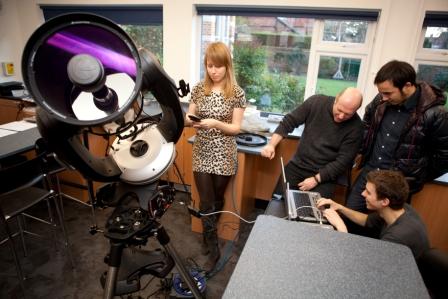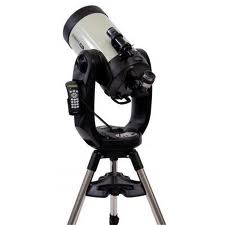Stargazing
Head of Physics, Simon Davis, took advantage of the excellent winter weather
conditions to teach students and staff about the night sky using College
Celestron CPC 1100 gps
telescope.
St. Clare's is the
only IB School in the world to offer Astronomy as a science
option as part of the International Baccalaureate Diploma.
Simon explains "It was a very clear and very cold evening. Highlights included: Jupiter with
its bands and three moons, a bright Venus, and Pleiades, more commonly known as the 'seven sisters'.
We were able to see the Andromeda Galaxy, a spiral galaxy approximately 2.5 million light-years from
Earth. Also known as Messier 31 or M31, it is found in the constellation Andromeda which
is one of the most distant objects that the unaided human eye can see but once found, it's hard to lose it again.
Many staff and students came to look through the eyepiece during the two hour viewing session. With excellent
conditions, many of the stars, constellations, and planets could also be seen with the naked eye."
Our viewing was also timely as the BBC recently broadcast a
Stargazing Live
programme hosted by Prof. Brian Cox and other experts at observatories around the world.


January

 January
January
